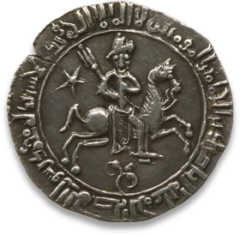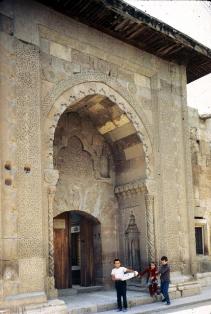The Anatolian Seljuks, also known as Seljuks of Rum (r. 474 - 708 AH / 1081 - 1308 CE) were the descendants of the Great Seljuks who ruled Persia, Syria and Anatolia.
The founding of the dynasty is credited to Suleyman b. Qutalmish I (d. 479 AH / 1086 CE), whose father, Qutalmish, was a cousin of the Seljuk rulers Chaghri (d. 452 AH / 1060 CE) and Tughril (d. 455 AH / 1063 CE). Suleyman challenged Alp Arslan (d. 464 AH / 1072 CE) for the Great Seljuk sultanate on the death of Tughril but was unsuccessful. In 471 AH / 1078 CE he conquered Iznik (Nicea) and established it as his capital. His son Qilij (r. 485-502 AH / 1092-1109 CE), upon his defeat by the Crusaders, moved the capital to Konya.
Subsequently, several ruling institutions and an administrative stuctures were established in Konya. Among the best known were (and continues to be) the mausoleum of the Sufi poet Jalal al-Din Rumi, and several madrasas, including the Karatay Madrasa (now a museum), the Ince Minareli Madrasa and the Sircali Madrasa.
During the reign of Qilij Arslan II (r. 551-588 AH / 1156-92 CE), Seljuk Anatolia became culturally linked to Iran, and to the rest of the then Muslim world. Greeks held important positions at the Seljuk court until the early 7th AH /13th CE century. The empire begun to disintegrate upon the death of Qilij Arslan II (d. 588 AH / 1192 CE) as a power struggle broke out between his twelve sons over the succession. After 600 AH / 1204 CE, his 11th son, Giyath al-Din Kaikhusrau I (r. 601-509 AH / 1204-1211 CE), consolidated Seljuk power in Anatolia. Subsequently, the reigns of Sultan Kaikavus I (608-616 AH / 1211-1219 CE) and Kayqubad I (616-635 AH / 1219-1237 CE) led to a period of political and cultural prosperity in Seljuk Anatolia.
Since 621 AH / 1224 CE, the Seljuks had been losing swathes of their Anatolian territories to the Mongols, and in 641 AH / 1243 CE the Seljuks were finally defeated at Kose Dagi (Köse Dağ) near Ankara. After plundering Seljuk lands, the Mongols retreated to Antalya. From 678 AH / 1279 CE onwards, the Seljuk territories of Anatolia came under the supreme authority of the Persian Ilkhanids, a Mongol dynasty ruled by the house of Hülegü. In 708 AH / 1308 CE, the Ilkhanids established these territories as a province of their empire. These events marked the end of independent Seljuk rule in Anatolia.
citation
Hattstein, Markus and Delius, Peter. Islam: Art and Architecture, (Cologne: Könemann, 2000).
Seljuks of Rum (Anatolia)
http://www.iranicaonline.org/articles/saljuqs-iii [accessed June 2013]
Bosworth, Clifford E. The Seljuks of Rum. The New Islamic Dynasties, (NY: Columbia University Press, 1996).
Wolper, Ethel Sara, Cities and Saints: Sufism and the Transformation of Urban Space in Medieval Anatolia, (University Park, PA: Pennsylvania University Press, 2003).
Lane-Poole, Stanley ‘The Successors of the Seljuks in Asia Minor’, in The Journal of the Royal Asiatic Society of Great Britain and Ireland, New Series, Vol. 14, No. 4 (Oct., 1882), 773–780.
The Art of the Seljuq Period in Anatolia
http://www.metmuseum.org/toah/hd/aselj/hd_aselj.htm#slideshow1 [accessed July 2013]
Monuments of Seljuks of Rum (Anatolia)
http://www.archnet.org/timelines/48/period/Seljuk%20of%20Rum%20(Anatolia)/year/1091 [accessed July 2013]
The Seljuks of Rum [Geography, Art and Architecture]
http://www.davidmus.dk/en/collections/islamic/dynasties/seljuks-of-rum [accessed July 16, 2013]



